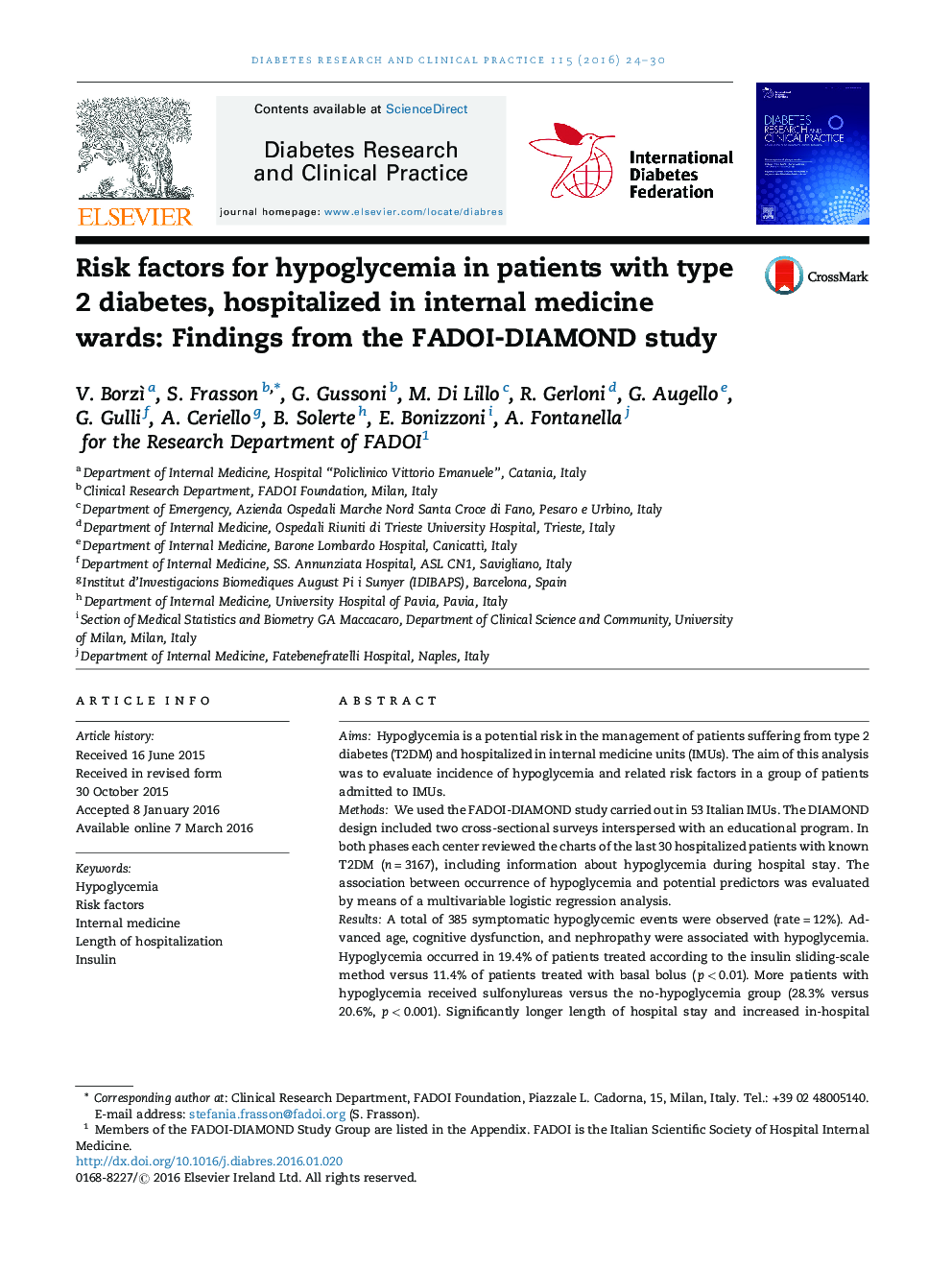| Article ID | Journal | Published Year | Pages | File Type |
|---|---|---|---|---|
| 5898901 | Diabetes Research and Clinical Practice | 2016 | 7 Pages |
AimsHypoglycemia is a potential risk in the management of patients suffering from type 2 diabetes (T2DM) and hospitalized in internal medicine units (IMUs). The aim of this analysis was to evaluate incidence of hypoglycemia and related risk factors in a group of patients admitted to IMUs.MethodsWe used the FADOI-DIAMOND study carried out in 53 Italian IMUs. The DIAMOND design included two cross-sectional surveys interspersed with an educational program. In both phases each center reviewed the charts of the last 30 hospitalized patients with known T2DM (n = 3167), including information about hypoglycemia during hospital stay. The association between occurrence of hypoglycemia and potential predictors was evaluated by means of a multivariable logistic regression analysis.ResultsA total of 385 symptomatic hypoglycemic events were observed (rate = 12%). Advanced age, cognitive dysfunction, and nephropathy were associated with hypoglycemia. Hypoglycemia occurred in 19.4% of patients treated according to the insulin sliding-scale method versus 11.4% of patients treated with basal bolus (p < 0.01). More patients with hypoglycemia received sulfonylureas versus the no-hypoglycemia group (28.3% versus 20.6%, p < 0.001). Significantly longer length of hospital stay and increased in-hospital mortality were found in the group with hypoglycemia compared with the no-hypoglycemia group (12.7 ± 10.9 versus 9.6 ± 6.5 days; 8.8% versus 4.8%, p < 0.01).ConclusionsHypoglycemia in hospitalized patients with diabetes is associated with increased length of hospitalization and in-hospital mortality. Identification of patients at increased risk of hypoglycemia may be important for optimally adapting treatment and patient management.
